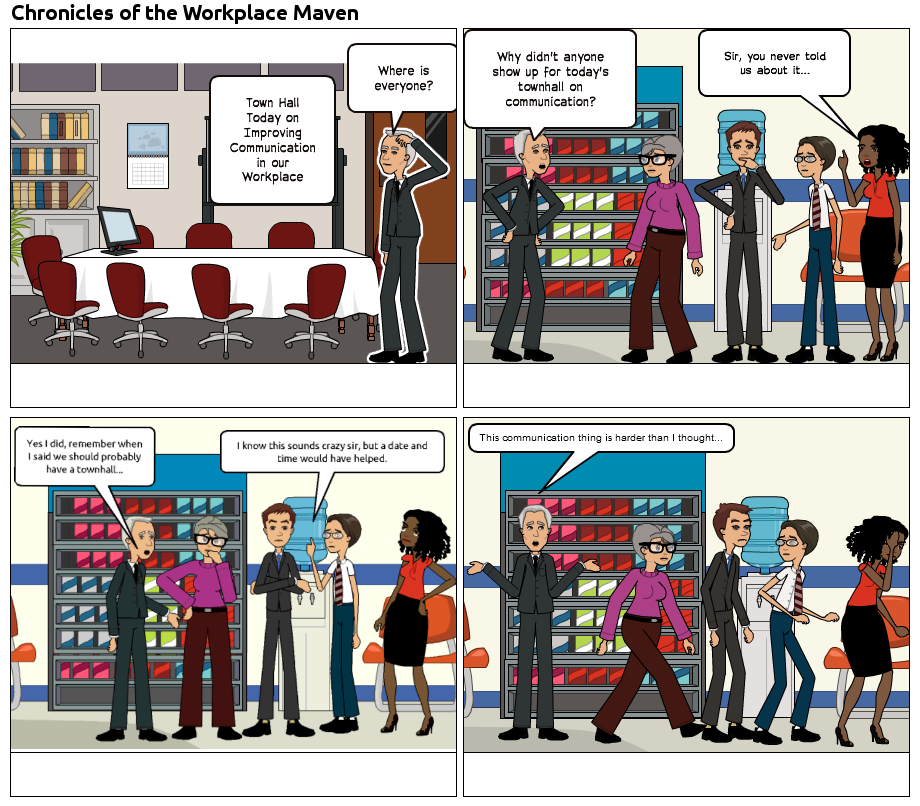“The biggest problem with leadership communication is the illusion that it has occurred.”[1] In a survey of employees concerning their perception of leadership communication, 86% of respondents indicated that their managers believed that they themselves (managers) were good communicators, yet only 17% of their employees would consider them to be good communicators. There is very often a distinction between perception and reality when it comes to determining whether effective communication exists in the workplace. Effective communication requires a commitment and there are 3 Pillars that can lead you to true effective communication.
1.Asking vs. Telling – think back to when you were a child, most of us growing up were given direction or orders by our parents on what to do and how to do it. Being asked by our parents about how we felt about doing what we were told wasn’t the norm. We didn’t like it then, so why would we think anyone would like it now? So rather than showing up on a Monday morning to “announce” changes to policy or protocol, try asking your employees what they think of the existing protocol and what their thoughts are to make it better. Even if you believe you already know what you’re going to do, you lose nothing by simply ‘asking’ your employees what they think before acting. Instead, something is gained by asking. The mere exercise of asking, irrespective of the result creates an environment of cooperation and ownership. Your employees will feel as though their opinion counts. And in the end, you might be surprised to find that your employees have ideas and perspectives that can contribute to solving the very issues you’re attempting to solve. And why wouldn’t they when they are the ones that are the closest to your clients or customers. Stop telling and start asking.
2. Purposeful Dialogue & Active Listening – Those in leadership positions often receive training on public speaking, commanding an audience, making compelling presentations, and the like, but rarely is there a focus on developing the skill of active listening which is essential to having a true dialogue. An effective leader understands that listening is a critical component to communication in the workplace. Active listening starts prior to even beginning the dialogue; it’s knowing that the purpose of your communication is not only to convey what you think, but to walk away with an understanding of someone else’s thoughts or opinions. So, what does active listening look like, sound like and feel like? Welcoming body language, eye contact and elimination of physical distractions and interruptions “look” like you are actively listening. That means checking out your phone while someone else is talking does NOT “look” like you are listening. It “sounds” like you are listening when you ask open-ended clarifying questions and can repeat what you heard them say. Examples of that would be “Let me see if I understand you correctly. First we… then we…” This not only ensures that you understood what you heard but also reaffirms to the employees that you are in fact listening. When it comes to employees “feeling” as though you’ve listened, statements that validate what an employee has shared such as “I truly heard you” or “I understand the concerns you’ve raised” will get you there.
3. Solicit Feedback – It is important to understand the value of asking for and receiving feedback from your employees. By soliciting feedback, you can continually monitor the effectiveness of your communication. A study from leadership development firm, ZengerFolkman, found that leaders who solicit feedback are substantially more effective than leaders who do not. Soliciting feedback is an excellent way for leaders to learn and grow. Resist the urge of assuming that you are effectively communicating and instead ask your employees whether you are, and use the information to improve upon how your attempts at communicating are being perceived. No matter how great a communicator you think you are, remember, the effectiveness of your communication is only as good as your employee’s perception and experience – that is your reality.

